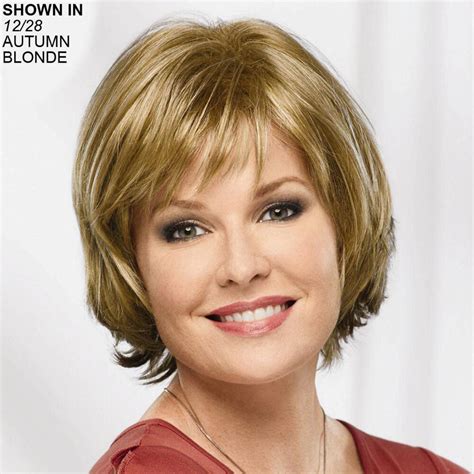As we age, our hair changes naturally. It may become thinner, grayer, or more difficult to style. For many older women, wigs offer a solution to these challenges, providing them with a way to express their personal style and boost their confidence.

Pain Points
- Thinning hair can make it difficult to achieve desired hairstyles.
- Gray hair can be unflattering and hard to conceal.
- Styling hair can become more challenging with age-related dexterity issues.
Motivations
- To enhance appearance and regain confidence.
- To cover hair loss or thinning.
- To experiment with different hairstyles and colors.
How to Choose a Wig for Older Women
1. Determine the Right Size and Fit
Measure your head circumference and choose a wig cap that fits snugly. A too-small wig will be uncomfortable, while a too-large one will not stay in place.
2. Select a Natural-Looking Hair Texture and Color
Opt for a wig that mimics the texture and color of your natural hair. This will ensure a seamless transition between your hair and the wig.
3. Consider Your Face Shape
Your face shape will influence the style of wig that best suits you. Oval faces can accommodate most styles, while round faces may look better with a wig that has more volume on top and sides.
4. Choose a Style that Complements Your Lifestyle
If you are active or have limited time for styling, a short, low-maintenance wig may be a better choice. For a more glamorous look, consider a longer, more voluminous wig.
Types of Wigs for Older Women
1. Synthetic Wigs
- Inexpensive and widely available.
- Can be styled with heat tools.
- May look less natural than human hair wigs.
2. Human Hair Wigs
- Natural-looking and versatile.
- Can be styled with heat tools and treated like natural hair.
- More expensive than synthetic wigs.
3. Lace Front Wigs
- Feature a sheer lace front that creates the illusion of a natural hairline.
- Provide a more realistic and flattering look.
- Require more maintenance and are more expensive.
Care and Maintenance of Wigs
- Wash synthetic wigs with cool water and a mild shampoo designed for wigs.
- Air-dry synthetic wigs or use a cool setting on a hairdryer.
- Wash human hair wigs with warm water and a gentle shampoo designed for human hair.
- Condition human hair wigs after each wash.
- Style wigs with low heat settings or cold styling tools.
- Store wigs in a cool, dry place when not in use.
Benefits of Wigs for Older Women
- Enhance appearance and boost confidence.
- Cover hair loss or thinning.
- Allow for experimentation with different hairstyles and colors.
- Provide a cost-effective solution compared to hair transplants or other procedures.
Trends in Wigs for Older Women
- Naturalistic styles that mimic the wearer’s natural hair.
- Wigs with subtle highlights or lowlights to add depth and dimension.
- Bobs and pixie cuts that are easy to style and maintain.
- Longer wigs with soft layers to add volume and movement.
Helpful Tables
Table 1: Wig Types Comparison
| Feature | Synthetic Wigs | Human Hair Wigs | Lace Front Wigs |
|---|---|---|---|
| Price | Affordable | Expensive | Most Expensive |
| Appearance | Less natural | More natural | Most natural |
| Heat Styling | Yes | Yes | Limited |
| Maintenance | Easy | Requires more care | Requires regular maintenance |
Table 2: Wig Hairstyles for Different Face Shapes
| Face Shape | Suitable Hairstyles |
|---|---|
| Oval | Any style |
| Round | Wigs with volume on top and sides |
| Square | Wigs with soft layers and side-swept bangs |
| Heart | Wigs with layers and a center part |
| Diamond | Wigs with volume at the crown and tapered sides |
Table 3: Wig Care Tips
| Type of Wig | Washing | Styling | Storage |
|---|---|---|---|
| Synthetic Wigs | Cool water, mild shampoo | Air-dry or cool hairdryer | Cool, dry place |
| Human Hair Wigs | Warm water, gentle shampoo | Condition, style with low heat | Cool, dry place |
| Lace Front Wigs | Professional cleaning recommended | Cold styling tools | Avoid tangling, store in a cool place |
Table 4: Benefits of Wigs for Older Women
| Benefit |
|—|—|
| Enhanced appearance and confidence |
| Coverage of hair loss or thinning |
| Experimentation with different hairstyles and colors |
| Cost-effective solution compared to hair transplants or other procedures |
